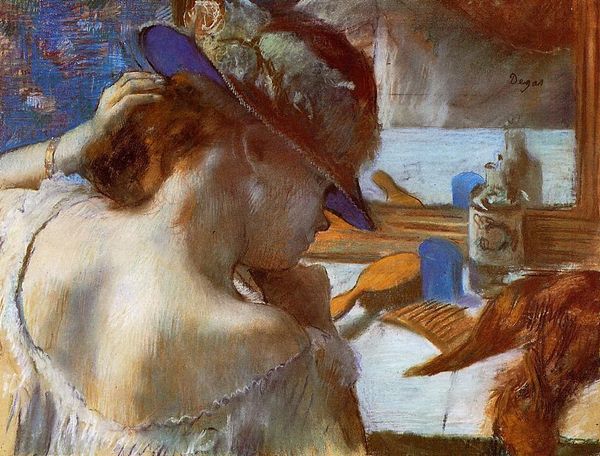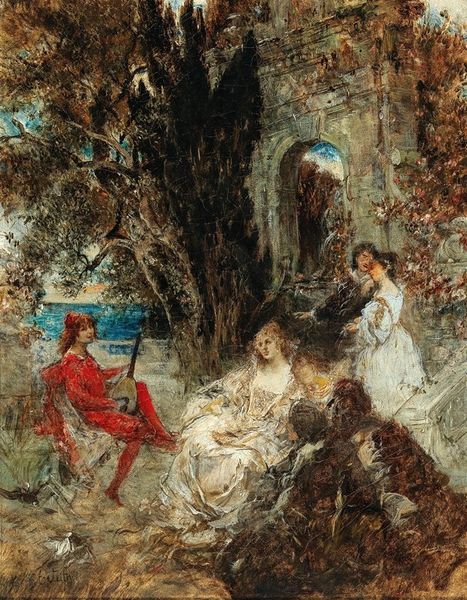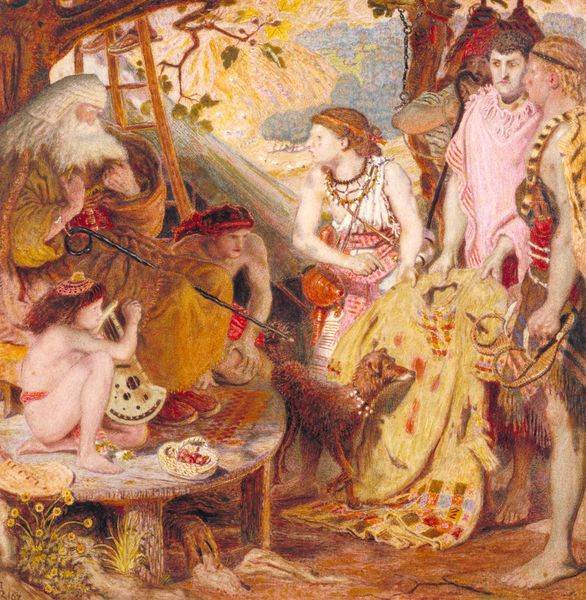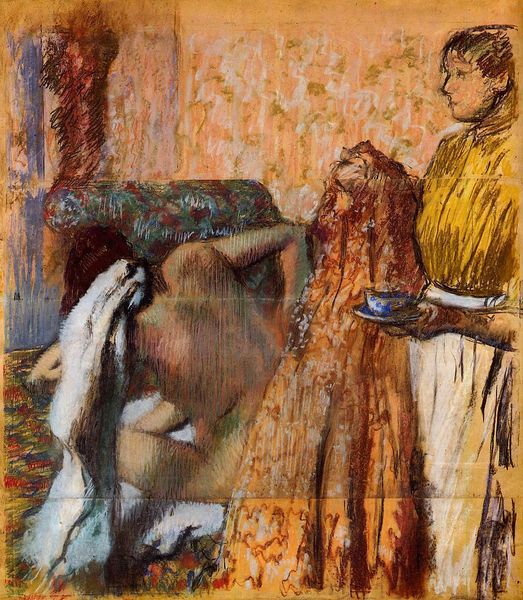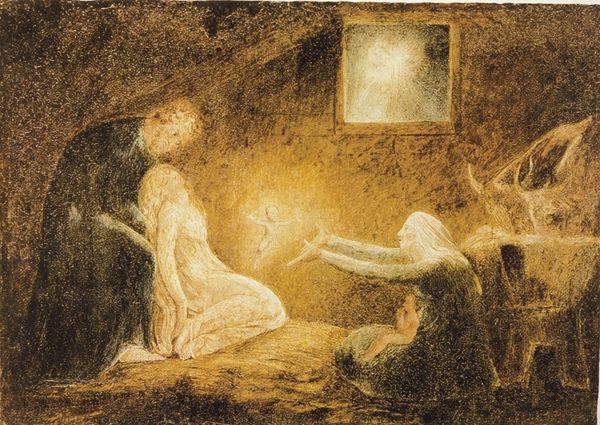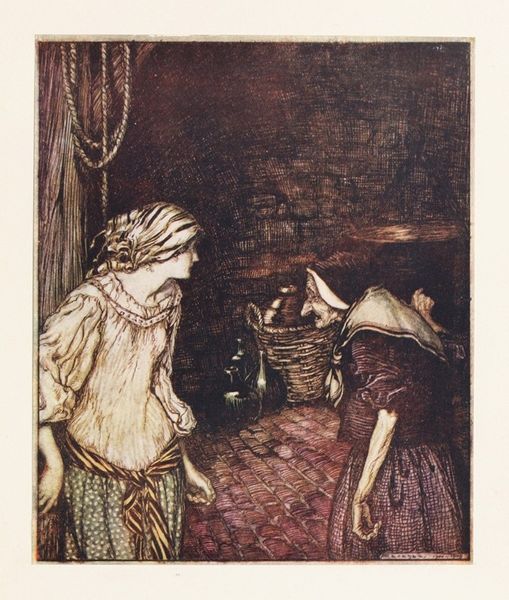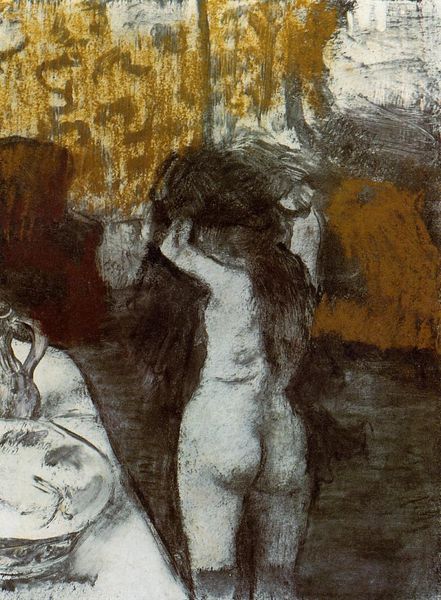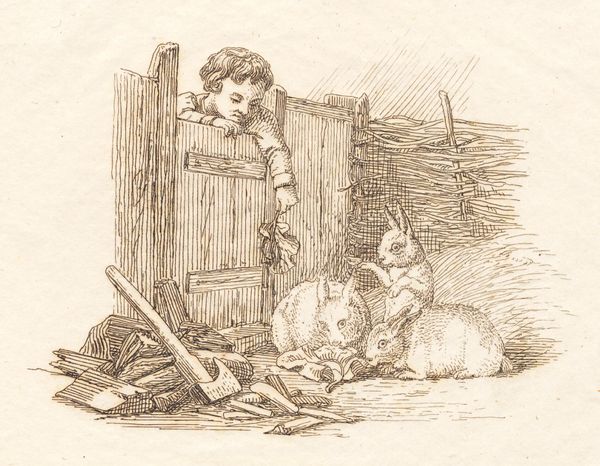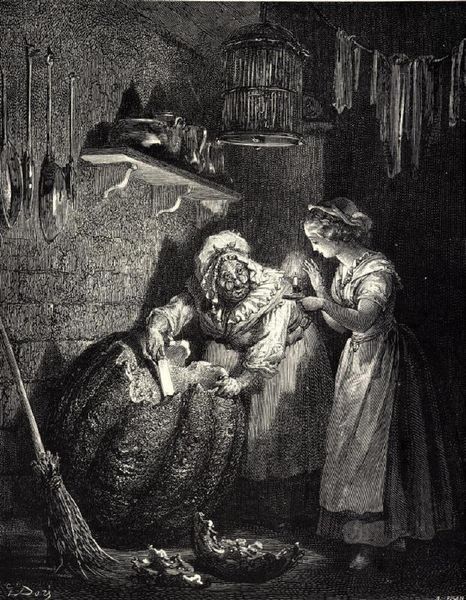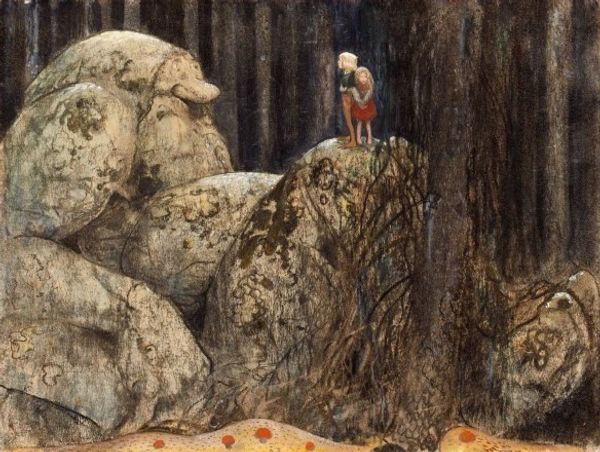
pastel
#
impressionism
#
figuration
#
oil painting
#
female-nude
#
genre-painting
#
pastel
#
nude
#
watercolor
Copyright: Public domain
Curator: This is Edgar Degas’ “Woman Squatting,” created around 1879 using pastel. It currently resides at the Musée d'Orsay. Editor: My immediate impression is one of voyeurism and vulnerability. There’s an almost uncomfortable intimacy in this depiction. Curator: That's an interesting reaction, stemming perhaps from the unusual composition. The figure is cropped, positioned off-center. Note how Degas employs the expressive potential of pastel; the textured strokes give volume to the figure and a certain rawness to the scene. Editor: It certainly deviates from idealized nudes common in art history. We're not presented with flawless beauty here. Instead, the work shows a body in a very private moment, possibly alluding to the performative expectations imposed on women, and perhaps her quiet rebellion against them. Curator: Indeed. Degas was concerned with portraying modern life, often depicting women in everyday activities like bathing or dressing. His study of Japanese prints influenced the asymmetry and flattened perspective seen here. Editor: I also see a commentary on class. While Impressionism often focused on leisure, this suggests a more domestic and possibly working-class environment, far from the boudoirs of the wealthy. There is something about her stance, almost protective, drawing herself in as a barrier. Curator: I find it captivating how Degas’ choice of pastel captures fleeting effects of light and texture, rendering the subject's physicality with frankness. He has rendered both form and sensation. Editor: For me, the image evokes deeper discussions about agency and how women are depicted, particularly in the 19th century. Despite the intimate pose, her inner thoughts and identity remain unseen, forcing the viewer to confront their own gaze. Curator: Studying its formal qualities has given me a renewed appreciation for Degas’ mastery of composition and his use of color to evoke both spatial depth and emotional intimacy. Editor: Engaging with the sociocultural elements has definitely expanded my understanding of how art can act as both a reflection of, and a challenge to, societal norms.
Comments
No comments
Be the first to comment and join the conversation on the ultimate creative platform.
